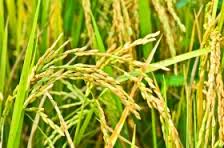 Crop Scientists in Japan have discovered a gene in rice that could significantly improve its resistance to drought a move that signals a bright future for many rice farmers in Kenya who have for a long time witnessed dwindled returns due to unpredictable weather patterns. Globally drought results in losses of over USD $800 million annually a fact that threatens food security given that over half the population in the feeds on rice.
Crop Scientists in Japan have discovered a gene in rice that could significantly improve its resistance to drought a move that signals a bright future for many rice farmers in Kenya who have for a long time witnessed dwindled returns due to unpredictable weather patterns. Globally drought results in losses of over USD $800 million annually a fact that threatens food security given that over half the population in the feeds on rice.
The new type of rice dubbed DEEPER ROOTING 1 (DRO1) has a gene that makes the roots of rice plants grow downwards instead of outwards, enabling them to reach water held deeper in the soil. It means that even under conditions of extreme water stress, the plants with DRO1 can continue to grow and produce grain. The new discovery has been championed by an international team of scientists led by the National Institute of Agrobiological Sciences (NIAS) in Japan together with their counterparts from International Center for Tropical Agriculture (CIAT).
Rice feeds around half of the world and production needs to increase by around 40 percent in order to meet the demands of 9 billion people by 2050. But each year drought affects some 23 million hectares of rain-fed rice in South and Southeast Asia alone, and in parts of India. Water scarcity can cut rice yields by more than a third. Water scarcity is also expected to increase as a result of climate change, and due to increased demand for water for industrial and urban use.
The scientists crossbred the high-yielding, but short-rooted and drought-prone commercial rice variety, IR64, with a deep-rooting upland rice variety from The Philippines, called Kinandang Patong. While IR64 already contains the DRO1 gene, the plant cannot produce the necessary proteins that enable the gene to function effectively. Through conventional breeding techniques, the scientists combined the high yields of IR64, with the fully-functional DRO1 gene in Kinandang Patong. The roots of the resulting plants were able to reach more than twice as deep as those of IR64. When tested under simulated conditions of moderate drought, IR64 yields slumped by almost 60 percent, while the crossbreeds suffered only a 10 percent yield loss. Under extreme drought, IR64 completely failed, but the new rice plants continued to produce grain – about 30percent of the yield of unstressed rice plants growing in normal conditions
The scientists also found that the DRO1 gene appears to only change the angle of root growth and slightly increase the length of the root tips, rather than the overall root density, meaning energy is not diverted away from the production of grain. “It’s a very exciting discovery,” said CIAT’s Manabu Ishitani, who was part of the research team. “We’ve known for some time that deeper roots can buy farmers extra time during periods of drought, but until now we haven’t known which gene in rice is responsible for root architecture, or how to control it. “Water availability will soon become the most limiting factor in rice production around the world. Improving the water-use efficiency of rice is essential if the crop is going to continue to be relied upon as a staple food for half of the world.” Dr Ishitani hopes that deeper roots might also be able to access additional nutrients deep in the soil, meaning farmers can use fertiliser more efficiently. Dr Masa Iwanaga, president of the Japan International Research Center for Agricultural Science (JIRCAS), welcomed the new findings: “The Green Revolution in the 1960s and 70s was made possible by the introduction of short stature, shallow-rooted cereals capable of producing high yields. The DRO1 gene confers deeper root system architecture to crops, which will surely mark the start of an ‘underground revolution’ in crop improvement, which will be essential for meeting the increasing worldwide demand for food.”
CIAT’s Joe Tohme, head of the centre’s Agrobiodiversity Research Area, said: “The discovery of DRO1 is a significant breakthrough in research to adapt food crops to water stress, especially as farmers around the world begin to feel the pressure of climate change on water availability. Technologies like this really can help boost production of one of the world’s most important crops.” Control of Root system architecture by DEEPER ROOTING 1 increases rice yield under drought conditions is published today in Nature Genetics.
Rice output in Kenya has steadily decreased, falling short to meet the consumption demand of 280,000 tonnes annually. Statistics indicate that the country for instance has rice production deficit of more than 200,000 tonnes, which has to be met by importing rice, resulting in loss of currency. Therefore according to stakeholders in the sector, the new rice variety will help mitigate such deficits a fact that will not only help the farmers but also boost the economy.
















Comments powered by CComment